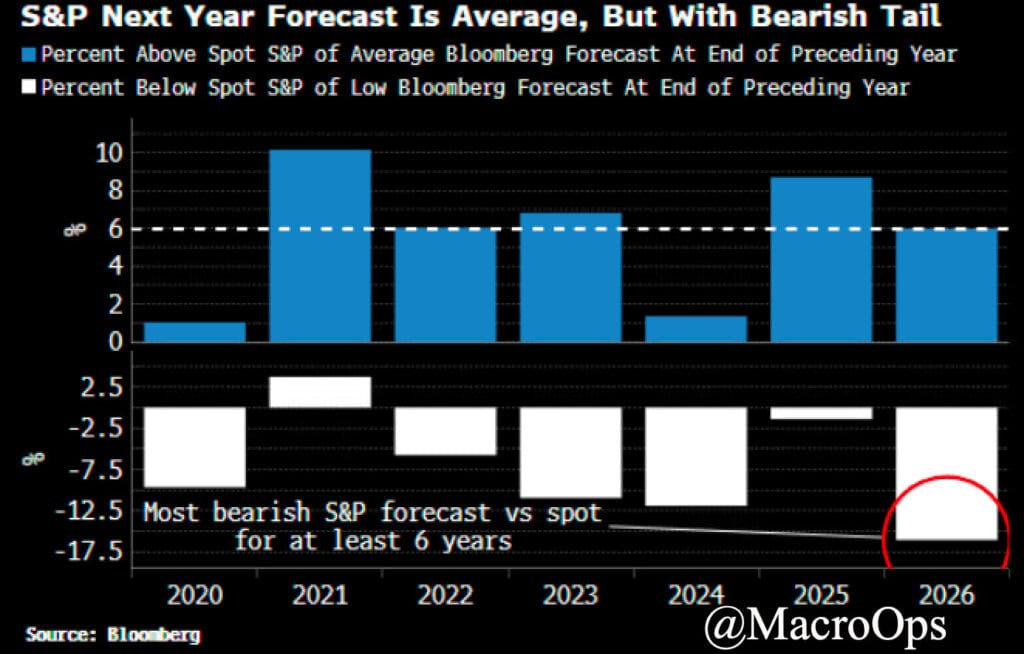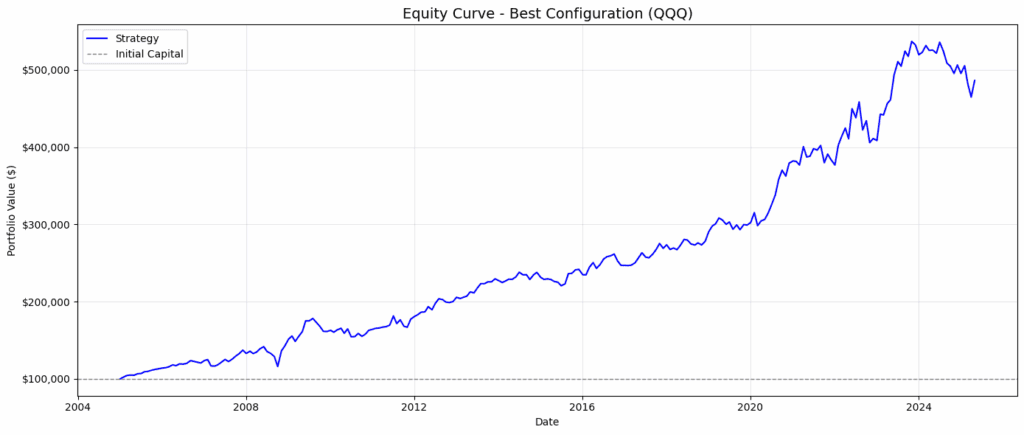“It’s amazing how many long-only investors fail to actually read things like the footnotes, disclosures, etc. This is stuff that reveals important things about the business that go mostly unnoticed. And that’s our opportunity.”
Robert Prather is an Investment Analyst and the founder of Vision Research. Vision Research is a Fundamental Research shop dedicated to finding and alerting investors of short-selling opportunities.
Before launching Vision Research, Prather spent time at a Big Three Accounting firm and a long-only hedge fund. Through his experience, Robert saw a need for dedicated fundamental short-selling research.
I had a chance to pick Robert’s brain on the fundamentals of short-selling, including:
- What makes an ideal short trade
- Why short selling is essential for capital markets
- How to spot red flags on a company’s balance sheet
- Short Case Studies: Allegro (ALE), Peloton (PTON)
Robert is in the spotlight for this week’s 3 Big Things (3BT).
3BT distills my podcast episodes into bite-sized summaries. Each piece features:
- One Conversation (Stocks, Psychology, Markets)
- One Framework (Mental Model, Analytical, Behavioral)
- One Idea (Long or Short)
Before we dive into this week’s 3BT, I want to let you know we’ve re-opened enrollment for the Macro Ops Collective!
The Collective is our full-kit soup-to-nuts service that provides research, theory, and a killer community that consists of dedicated traders, investors, and fund managers from around the world.
We’ve been told that there’s nothing else like it on the web. If you’d like to tackle markets with our group (whom, I should note, has been having a great year in markets), then just click the button below and sign up. And, as always, don’t hesitate to shoot me any Qs!
Alright, let’s dig into my podcast with Robert Prather.
One Conversation: Spotting Red Flags w/ Balance Sheet Analysis
A great way to spot potential short ideas is through rigorous Balance Sheet analysis. Robert walked through three red flags investors should consider when analyzing a company’s balance sheet.
Accelerating Accounts Receivable (A/R) Growth
Accounts Receivables show how long the company takes to collect money from its customers. We’ve written extensively about A/R at Macro Ops, which you can find here.
According to Robert, there are a few common explanations for accelerating A/R growth. The first (and most obvious) explanation is that the company has trouble collecting cash from its customers, signaling potential financial operations issues.
Another explanation is that the company allows customers more favorable credit terms (Net 60 versus Net 30). Companies do this to entice more business and sell more products through their channels, which reduces inventory.
Robert’s final explanation is that the company uses aggressive revenue recognition principles. In other words, a company claims to sell its products, which it books as revenue, yet fails to collect the cash for those “sales.”
However, you shouldn’t focus on absolute numbers, as Robert explained (emphasis mine):
“Absolute A/R numbers tell you nothing about the health of the business. Instead, examine those numbers against relative and historical trends. Is it in line with the historical average of this kind of business?
Also, compare these figures against industry peers/competitors. This will tell you if this accelerating A/R is part of a broader industry contraction or a company-specific issue.”
A/R analysis is also industry-specific. Retailers like Gap (GPS) collect money from their customers at the point of sale. So they’ll carry little (if any) A/R on its balance sheet.
Service and manufacturing businesses – any business with Net 30 payment terms – possess A/R growth risks.
Rising Inventory Levels
Rising inventory balances indicate a few potential issues. Before jumping to conclusions, Robert suggests asking the following questions:
- Why is inventory piling up on the balance sheet?
- What is going on in the business to explain the increase?
- Is this industry-wide or company-specific?
Robert used Apple (AAPL) as an example. Suppose AAPL builds a new device to sell in two years. Under such conditions, it makes sense that we should see AAPL’s inventory expand as they ramp production.
Rising Inventory becomes an issue when you can’t explain/justify why it’s happening.
There are two main consequences of rising inventory levels:
- Future product discounts
- Need to slow future production
Product discounts reduce the amount of money a company collects on its products. And production slowdowns increase the per-unit fixed operating costs. All of which reduce margins.
Like A/R, inventory is also industry-specific. Software businesses, for example, will likely carry little (if any) inventory on their balance sheet. Same thing for online marketplaces, etc.
Growing Accounts Payable (A/P) Balances
A/P growth is an easy way to increase cash flow generation in the short term. Companies grow A/P by taking longer to pay their suppliers and vendors. For example, a manufacturing company recently extended its payment terms with a vendor from 30 to 60 days, giving it 30 extra days of cash flow.
Growing A/P balances isn’t a bad thing in isolation. Robert offered a few questions to gauge the health of A/P balances:
- What are the average Days Payables in the industry?
- Are the current Days Payable higher than average for this business?
Here’s a great heuristic to assess A/P balance quality. Take the average Days Payables for a company’s competitors. Plug that number into your company. What would cash flow generation look like with this updated Days Payable? Would the company generate positive or negative free cash flow?
The answer to that question will determine if management’s leveraging A/P out of necessity.
One Framework: How To Find Short Setups
I asked Robert how he finds excellent short setups. He offered his soup-to-nuts playbook on screening and selecting his short research candidates.
Here’s the distilled version of Robert’s process. Use this information to create your own short-focused screener in TIKR.
Robert Prather’s Short Setup Criteria
- Liquidity: “Does it trade enough so that I (or my clients) don’t get squeezed?”
Liquidity includes metrics like Days To Cover, Short Interest, and Borrow Costs. Robert prefers shorter Days To Cover, smaller Short Interest ratios, and lower Borrow Costs.
- Growth Rates: “Can I find companies that are moving from low-growth to no-growth environments?”
Robert avoids high growth, high short-interest short ideas. It’s a more complicated game predicting declining revenue growth if a business currently grows 40-50%. However, lower-growth companies are boring, usually underfollowed, and have smaller short interests, making for easier targets.
- Earnings Quality Components: “Are there clues in the company’s balance sheet that I can spot for potential shorts?”
We discussed three Earnings Quality attributes earlier. A few metrics to screen for such red flags include (on a YoY basis): Growing A/R Balances, Growing Inventory Balances, and Increasing A/P Balances.
- Perception & Reality Gaps: “What are the current market expectations and how close/far away are they from reality?”
Robert tries to understand what the market is currently pricing in (margin expansion, revenue growth, etc.) and then judges those assumptions against his version of reality.
There are a few ways to screen for perception vs. reality gaps:
- 3-5YR Forward Revenue CAGR Projections
- 3-5YR Forward Margin Estimates
- Current Multiples: Earnings, EBIT(DA), Revenues, or Cash Flow
Perception vs. reality gaps exists if the market’s future expectations for earnings growth and/or margin expansion over-step rational business assumptions. Correct predictions on that gap also allow a short seller to benefit from multiple compression.
One Idea: Allegro (ALE) Short Thesis
One short idea Robert shared with me before the podcast was Allegro (ALE). ALE is Poland’s version of Amazon (AMZN).
ALE is an interesting case study because it looked like a good business. Robert explained on the podcast (emphasis mine):
“ALE IPO’d at a $20B valuation. Revenues were growing quickly, margins were expanding, and the company benefited from operating leverage and even turned profitable.”
That doesn’t sound like an ideal short. So what’s the catch?
Robert identified two main factors that would lower profit margins while increasing operating costs.
Here’s how he outlined the short thesis (emphasis added):
“The short view boiled down to lower take rates and increased competition. ALE faced competitive threats from Amazon, AliExpress, and Shopee. Take rates would race to the bottom. Not to mention shipping/logistics costs would increase, further pressuring margins.
For example, ALE had free shipping if you spent 100 Zloty. AMZN came in and slashed that to 40 Zloty for free shipping.
So now you have a race to the bottom on shipping costs to the consumer, lower take rates to gain more customers and increased competition from prominent players.
Not to mention ALE already had 40-50% market penetration, so most of the high growth is in its past.”
ALE traded at ~30x EBITDA when Robert drafted his short thesis. Obviously, we have the benefit of hindsight. But given what you know about ALE, did they deserve to trade at 30x EBITDA? No.
Today the company trades at 15x EBITDA.
Wrapping Up: Where To Learn More
Thanks for reading, and I hope you learned something. Check out these resources if you want to learn more about Robert, his Short Selling service, other podcasts, etc.:
- Vision Research Website
- Robert Prather Podcast Appearances outside Value Hive (here)
**Note: Enrollment into our Collective kicks off today and will be running into the end of the week.
The Collective is our full-kit soup-to-nuts service that provides research, theory, and a killer community that consists of dedicated traders, investors, and fund managers from around the world.
We’ve been told that there’s nothing else like it on the web. If you’d like to tackle markets with our group (whom, I should note, has been having a great year in markets), then just click the button below and sign up. And, as always, don’t hesitate to shoot me any Qs!***







